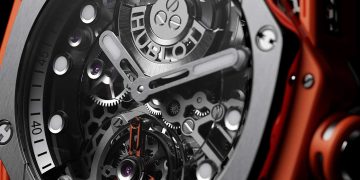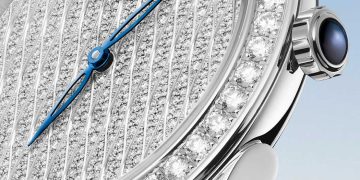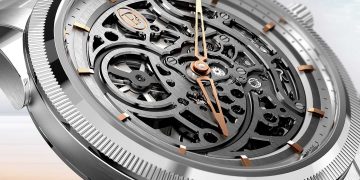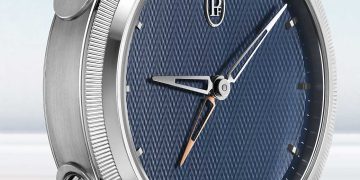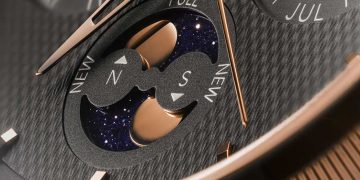The essence of MB&F. The spirit of Can-Am.
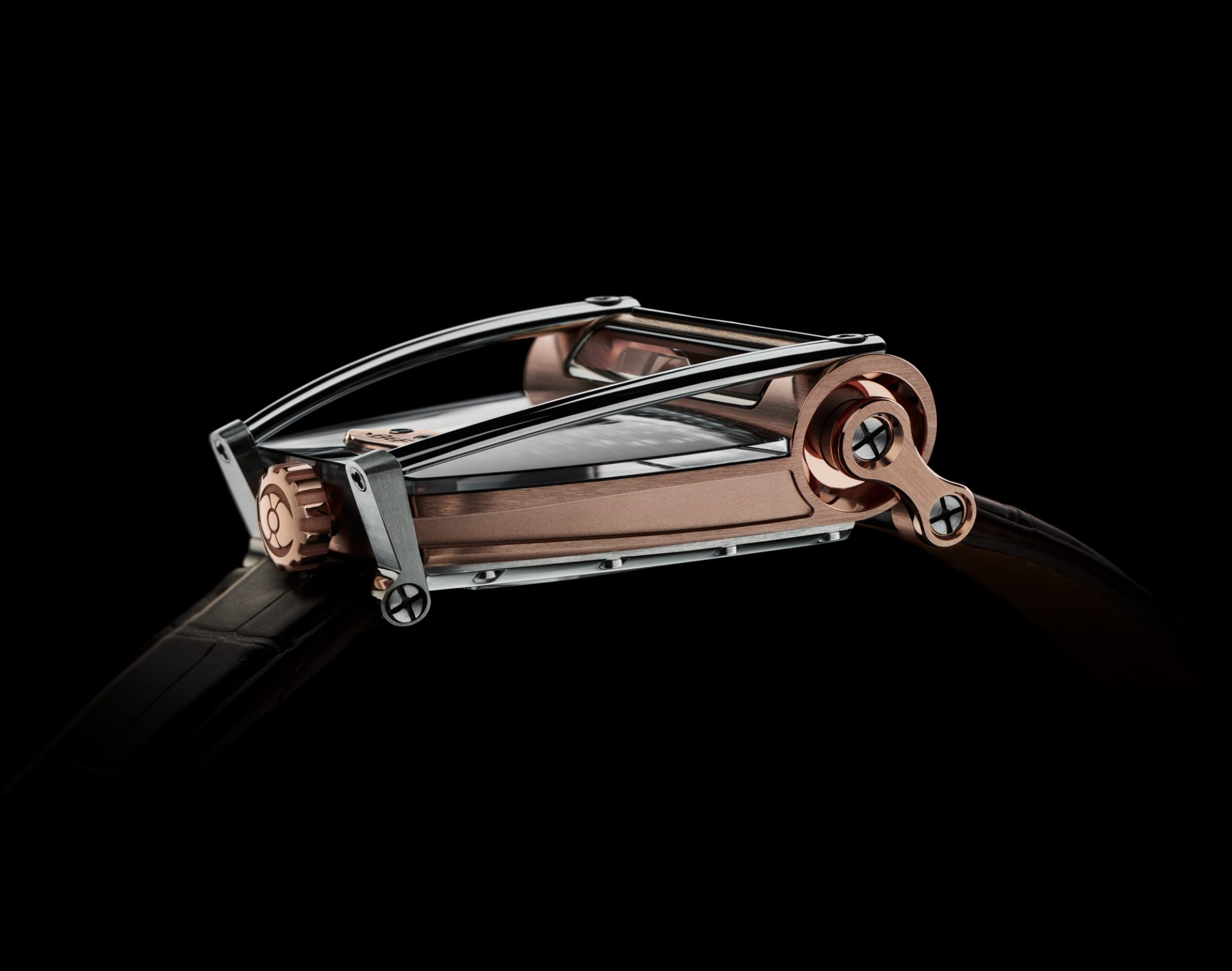
Over the last decade, two indelible forms have often marked MB&F’s Horological Machines: the distinctive angular form and optical prism displays of the revisited 1970s Amida watch, which first manifested in HM5 and then HMX; and the now signature “battle-axe” winding rotor, which took centre stage on top of HM3, MB&F’s most popular model to date.
Horological Machine N°8 (HM8) takes those two idiosyncratic features and infuses them with high-octane Can-Am race car-inspired design – generating an exquisitely sculptured, high-speed wrist-borne fantasy.
Gentlemen, start your engines. Feel the THUNDER!
HM8 rises from the turbo-charged ashes of the Can-Am, a discontinued “anything goes” car racing series that would have celebrated its 50th anniversary in 2016.
The Canadian-American Challenge Cup, Can-Am for short, was a sports car racing series running from 1966 to 1987. Bruce McLaren developed his very first car for the Can-Am series; McLaren, Lola, Chaparral, BRM, Shadow and Porsche all ran manufacture teams. Class restrictions in the Can-Am were minimal and allowed for unlimited engine sizes, turbocharging, supercharging, and basically unrestricted aerodynamics. This all led to the development of pioneering technology in many fields. And extremely powerful engines.
HM8 Can-Am features a curvaceous yet angular case, with dual optical prisms vertically displaying bi-directional jumping hours and trailing minutes, while the distinctive battle-axe winding rotor is visible on top. But the real star of HM8 is its Can-Am inspired polished “roll bars” majestically sweeping from the front of the Machine down to the beguiling tapered back. Incongruously for a fully mechanical racing machine, the visual effect is electric.
MB&F founder Maximilian Büsser describes Horological Machine N°8:“I feel that this is one of the coolest pieces I’ve ever created.”
Those roll bars are milled from solid blocks of grade 5 titanium and then meticulously hand-polished to gleam like tubular mirrors.
HM8’s Engine sits in full view under a nearly invisible sapphire crystal engine cover. The open centre of the blued-gold battle-axe rotor enables appreciation of the circular wave finish on the movement, while the hour and minute indication discs are visible in the corners.
The generous use of sapphire crystal allows unfettered visual access to the movement while its transparency backlights the time displays, making them more legible by day. Light also charges the Super-LumiNova numerals on the hour and minute discs for maximum legibility by night. HM8’s form amplifies its function rather than simply following it.
HM8 Can-Am launches in two versions: 18K white gold/titanium and 18K red gold/titanium.
HM8 Can-Am in detail
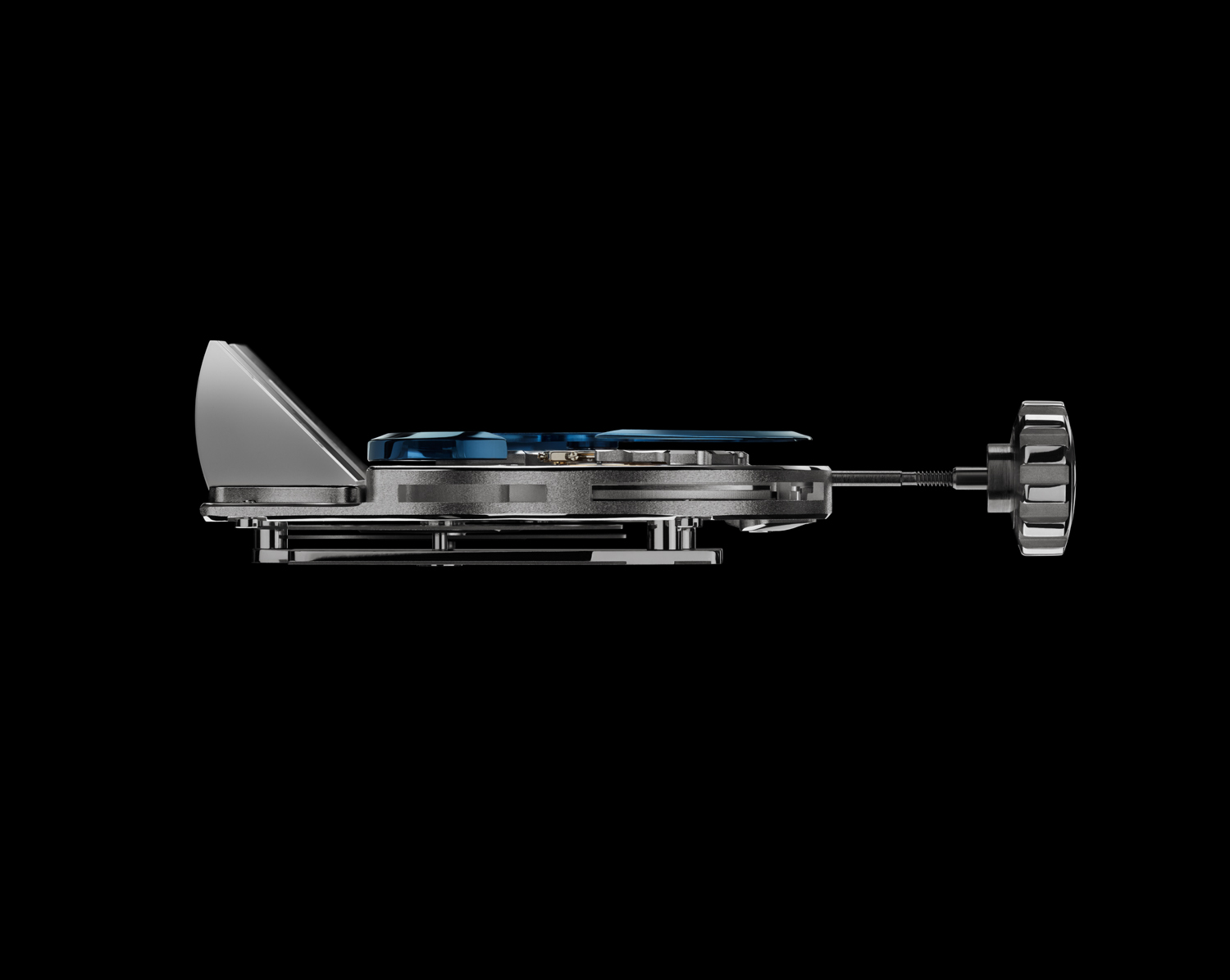
Inspiration
When he was young, MB&F founder Maximilian Büsser dreamt of becoming a car designer, but that wasn’t an option and he ended up designing watches instead. Or did he? It wouldn’t take much to scale HM8 up to car size, drop a 1,000+ horsepower motor under the sapphire crystal hood and put a set of slick racing tyres under the chassis.
While visually it is those polished roll bars linking HM8 to the Can-Am supercars, it’s the rebellious spirit of working outside restrictive rules that really provided the inspiration for HM8.
Case, roll bars, and crystals
At first glance it may appear that the sapphire crystal covering the HM8 Engine is circular and positioned above the battle-axe rotor, but it’s not. The complete top of the case is one piece of sapphire crystal with sections of the crystal metallised to create a bluish border. That crystal, combined with the polished roll bars on each side, the oil sumps underneath, and the time displays created by optical prisms highlight HM8’s unrestricted horological creativity.
The roll bars are in grade 5 titanium, which has the desired qualities of being light in weight and high in strength. But that strength comes with a twist: titanium is not very malleable and cannot be bent easily into the desired long curve, which means that each roll bar has to be milled from a solid block of titanium Ti-6Al-4V. This is a blend of pure titanium with 6% aluminium and 4% vanadium as well as trace amounts of iron and oxygen. The Ti-6Al-4V alloy is significantly stronger than commercially pure titanium and boasts an excellent combination of lightness, strength, and resistance to corrosion.
Turning HM8 over reveals another automotive tip of the hat: like most car engines which have an “oil sump” located underneath, HM8 has dual oil sumps under its own Engine.
Engine
HM8 Can-Am is powered by an in-house developed bi-directional jumping hour and trailing minute indication module, on a Girard-Perregaux base movement. The movement is inverted to put the winding rotor on top and modified to drive the prism indicator module. The finishing of the movement is first class, which it has to be as it is completely open to view from the top. The power reserve is 42 hours.
Indications and reflective prisms
The bi-directional jumping hour and trailing minute displays on HM8 are materialised by overlapping discs (one for the hours, one for the minutes), completely covered in Super-LumiNova. The effect of large numerals is created by masking all of the lume except for the numbers.
The discs rotate horizontally on top of the movement; they are visible in the corners of the transparent Engine cover. Yet the time indications are displayed vertically in a ‘dashboard’ at the front of the case. To achieve this, MB&F worked with a high-precision optical glass supplier to develop reflective sapphire crystal prisms that reflect light from the discs 90°. The prisms also magnify the indications by 20% to maximise legibility.
HM8 has separate sapphire crystal prisms for the hour and minute displays, which are wedge-shaped with precisely calculated angles to ensure that light is reflected (and reversed) from the horizontal indications to the vertical rather than refracted (bent). A convex lens at the front provides the magnification.
Sapphire crystal is much more difficult to work to optical precision than glass, and it took considerable development and meticulous care in production to create crystals that reflected and magnified light without the slightest distortion. Because the time is reflected, the numbers are printed on the discs as mirror images so that they display correctly on the ‘dial’.
The vertical, forward-facing display makes HM8 Can-Am an excellent driver’s watch, as there is no need to lift your wrist from the steering wheel to read the display.
The Can-Am
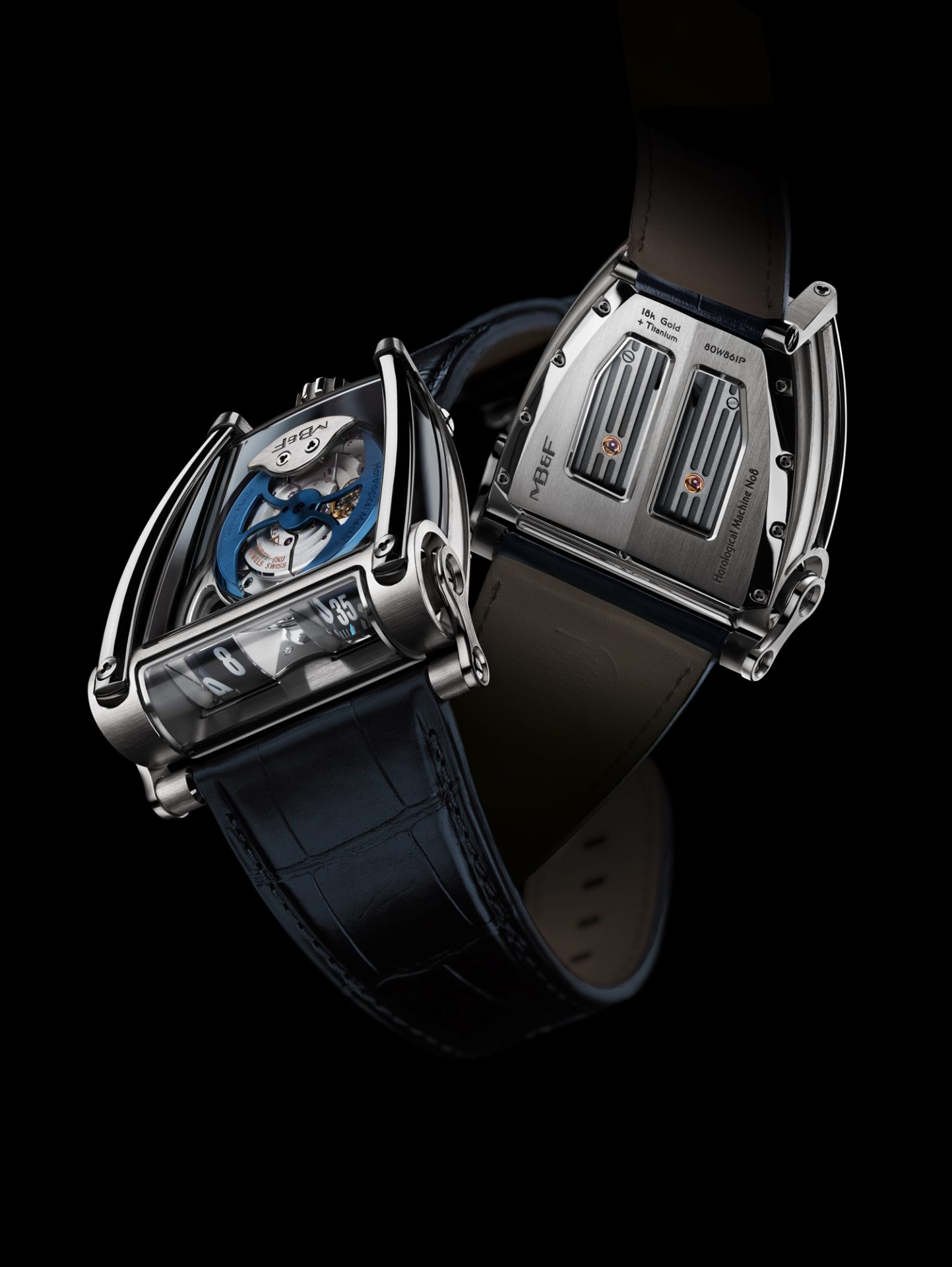
In the 1960s, Formula One car racing was mainly European and very regimented, with only small modifications permitted within tight rules designed to slow cars down. The engines were only developed up to 600-horsepower. A few North American racers balked at all the restrictions and decided to create their own racing series, the Canadian-American Challenge Cup (which became more popularly known as the Can-Am). The series launched many of the greatest names in car racing, including Lola and McLaren. The Can-Am basically had no rules except to go fast!
The Canadian-American Challenge Cup was a Group 7 SCCA/CASC sports car racing series running from 1966 to 1987, with two races in Canada and four in the USA each season. Because the class permitted virtually “anything goes” in terms of engine size, power and aerodynamics, the Can-Am was a hotbed of technical innovation. Wings, race turbocharging, ground-effect aerodynamics, and materials like titanium were all honed in the Can-Am. As long as a car had two seats, bodywork around the wheels, and met basic safety rules, it was likely to qualify. At its peak, Can-Am cars had the most advanced racing technology in the world, and with 1,000 horsepower compared to Formula One’s 500-600 horsepower at the time, Can-Am cars lapped some tracks faster than F1 cars.
And those stunning chrome roll bars ensured the driver’s safety if all of that power were to suddenly turn upside down.
While lack of restrictions in Can-Am provided its main attraction, the constant race to develop more power, better handling, and improved aerodynamics was extremely expensive. When you can do anything to a race car to make go faster, it’s expensive to do it all – but if you don’t, the other team might. In 1972 Porsche developed a 917 with a flat-12 motor producing up to an incredible 1,580 horsepower. Porsche called it the Turbopanzer and, weighing in at just 816 kilograms, it was capable of over 380 km/h (240 mph) on the straights. Unsurprisingly, the Turbopanzer was so dominant in 1973 that a minimum fuel consumption rule was introduced the following season.
But by the early 1970s the writing was on the wall. An oil crisis followed by a recession wasn’t conducive to a very expensive racing series, and in 1987 the Can-Am ran its last race.
HM8 Can-Am technical specifications
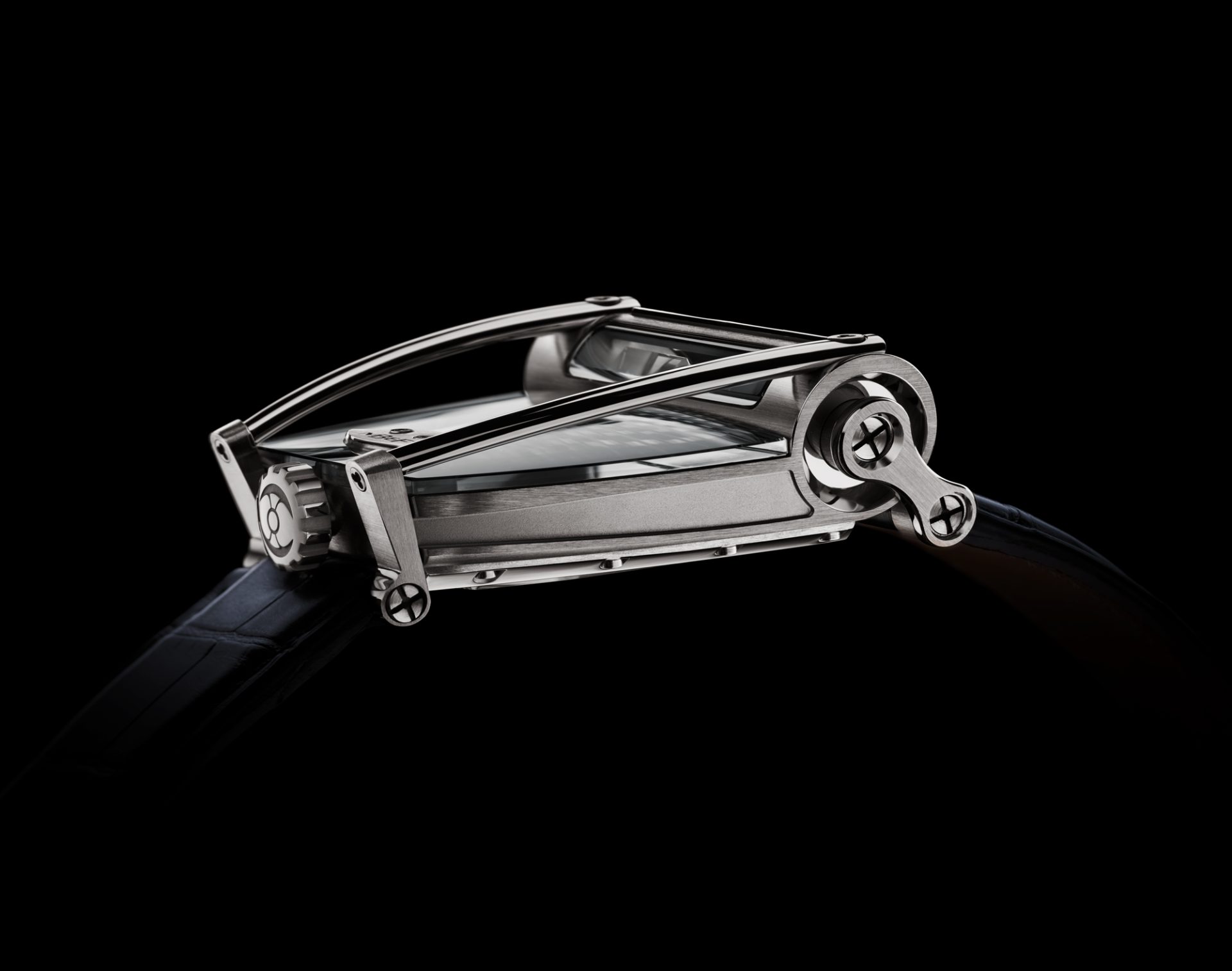
Engine
Three-dimensional engine conceived and developed by MB&F from a Girard-Perregaux base calibre
Automatic battle-axe winding rotor in 22k gold
Power reserve: 42 hours
Balance frequency: 28,800bph / 4Hz
Number of components: 247
Number of jewels: 30
Functions/indications
Bi-directional jumping hours and trailing minutes displayed by two optical prisms that both reflect and magnify
Case
Material: launch editions in 18k white gold/titanium and 18k red gold/titanium
Dimensions: 49 mm x 51.5 mm x 19 mm
Number of components: 60 components
Water resistance: 30 m / 90′ / 3 atm
Sapphire crystals
All sapphire crystals – front, back, top, bottom – treated with anti-reflective coating on both faces
Strap & buckle
Hand-stitched alligator strap in marine blue (white gold case) and dark brown (red gold case) with folding buckle in matching case material
‘Friends’ responsible for HM8 Can-Am
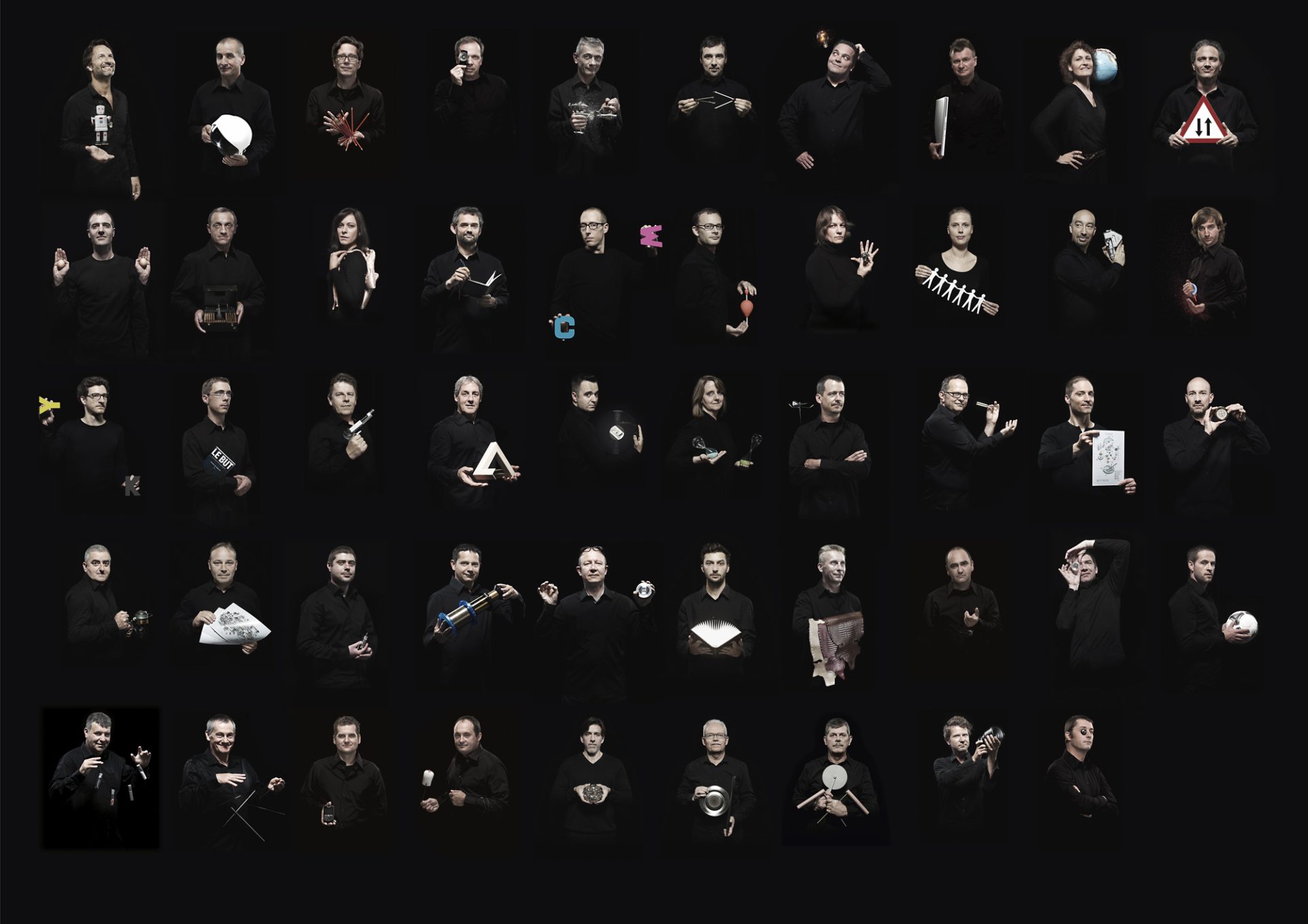
Concept: Maximilian Büsser / MB&F
Horological Machine design: Eric Giroud / Eric Giroud Design Studio
Technical and production management: Serge Kriknoff / MB&F
R&D: Guillaume Thévenin and Ruben Martinez / MB&F
Movement development: Guillaume Thévenin / MB&F
Base movement: Stefano Macaluso, Raphael Ackermann / Girard Perregaux
Case: Fabien Chapatte and Riccardo Pescante / Les Artisans Boitiers
Precision turning of wheels, pinions and axes: Dominique Guye / DMP horlogerie, Yves Bandi / Bandi and Jean-François Mojon / Chronode
Mainspring: Alain Pellet / Elefil
Plates and bridges: Rodrigue Baume / DAMATEC and Benjamin Signoud / AMECAP
Mystery winding rotor: Denis Villars / Cendres et Métaux and Pierre-Albert Steinmann / Positive Coating
Hand-finishing of movement components: Jacques-Adrien Rochat and Denis Garcia / C.-L. Rochat
Movement assembly: Didier Dumas, Georges Veisy, Anne Guiter, Emmanuel Maitre, Henri Porteboeuf and Thomas Imberti / MB&F
In-house machining: Alain Lemarchand / MB&F
Quality control: Cyril Fallet / MB&F
Sapphire crystals: Sebastien Sangsue and Gregory Esseric / Sebal
Metallisation of sapphire crystals: Roland Rhyner / Econorm
Discs for hours – minutes and optical prisms: Jean-Michel Pellaton and Gérard Guerne / Bloesch
Crown: Jean-Pierre Cassard / Cheval Frères
Buckle: Dominique Mainier and Bertrand Jeunet / G&F Châtelain
Bracelet: Olivier Purnot / Camille Fournet
Case: Olivier Berthon / ATS Atelier Luxe
Logistics and production: David Lamy and Isabel Ortega / MB&F
Marketing & Communication: Charris Yadigaroglou, Virginie Meylan and Juliette Duru / MB&F
M.A.D.Gallery: Hervé Estienne / MB&F
Sales: Patricia Duvillard and Philip Ogle / MB&F
Graphic design: Samuel Pasquier / MB&F, Adrien Schulz and Gilles Bondallaz / Z+Z
Horological Art photography: Maarten van der Ende
Portrait photography: Régis Golay / Federal
Webmasters: Stéphane Balet / NORD Magnétique and Victor Rodriguez / NIMEO
Film: Marc-André Deschoux / MADinSwitzerland
Texts: Ian Skellern / Quill & Pad
MB&F – Genesis of a Concept Laboratory
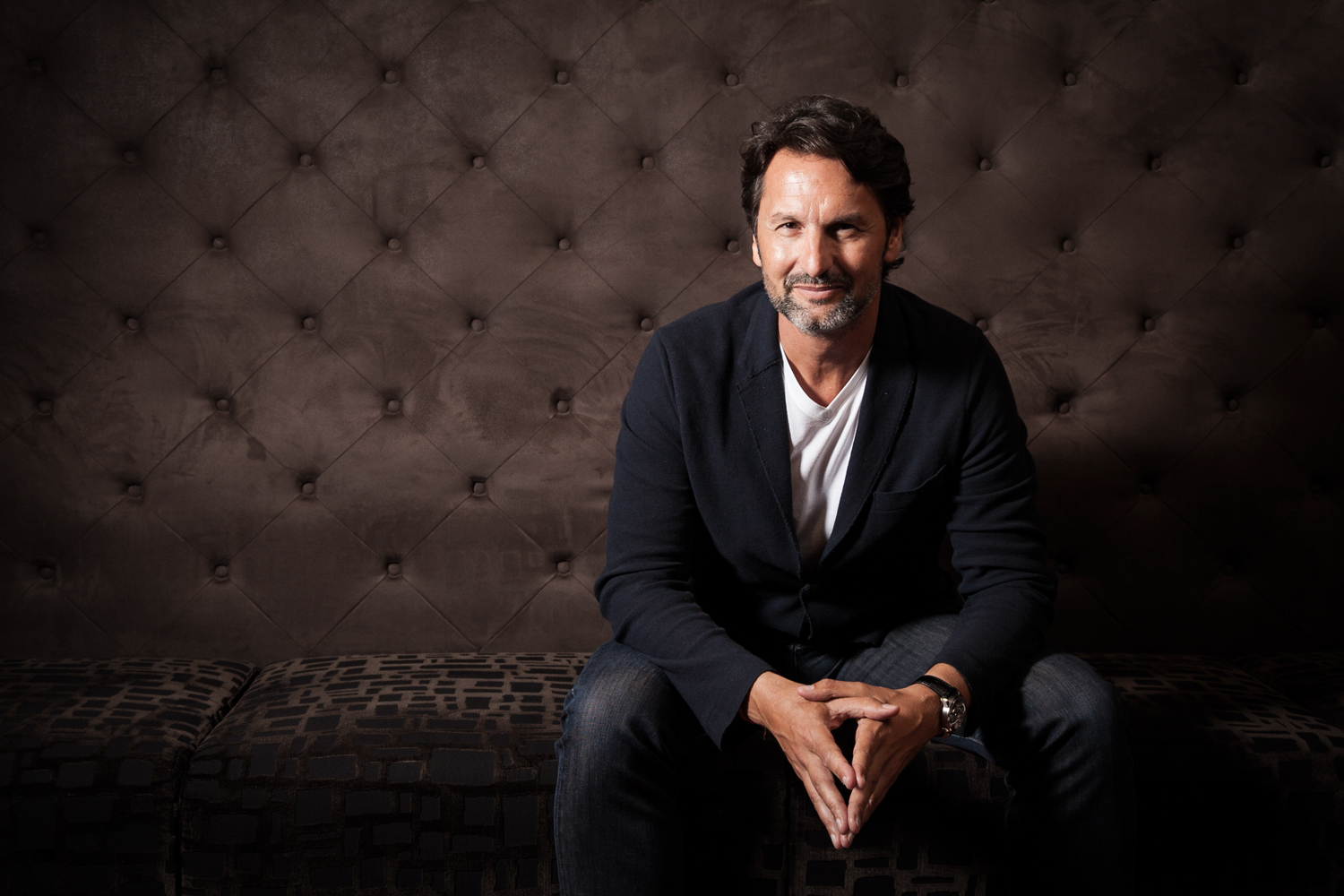
In 2015, MB&F celebrated its 10th anniversary – and what a decade it was for the world’s first ever horological concept laboratory: 10 years of hyper-creativity; 11 remarkable calibres forming the base of the critically acclaimed Horological Machines and Legacy Machines for which MB&F has become renowned.
After 15 years managing prestigious watch brands, Maximilian Büsser resigned from his Managing Director position at Harry Winston in 2005 to create MB&F – Maximilian Büsser & Friends. MB&F is an artistic and micro-engineering laboratory dedicated to designing and crafting small series of radical concept watches by bringing together talented horological professionals that Büsser both respects and enjoys working with.
In 2007, MB&F unveiled its first Horological Machine, HM1. HM1’s sculptured, three-dimensional case and beautifully finished engine (movement) set the standard for the idiosyncratic Horological Machines that have followed: HM2, HM3, HM4, HM5, HM6, HMX and HM7 – all Machines that tell the time, rather than Machines to tell the time.
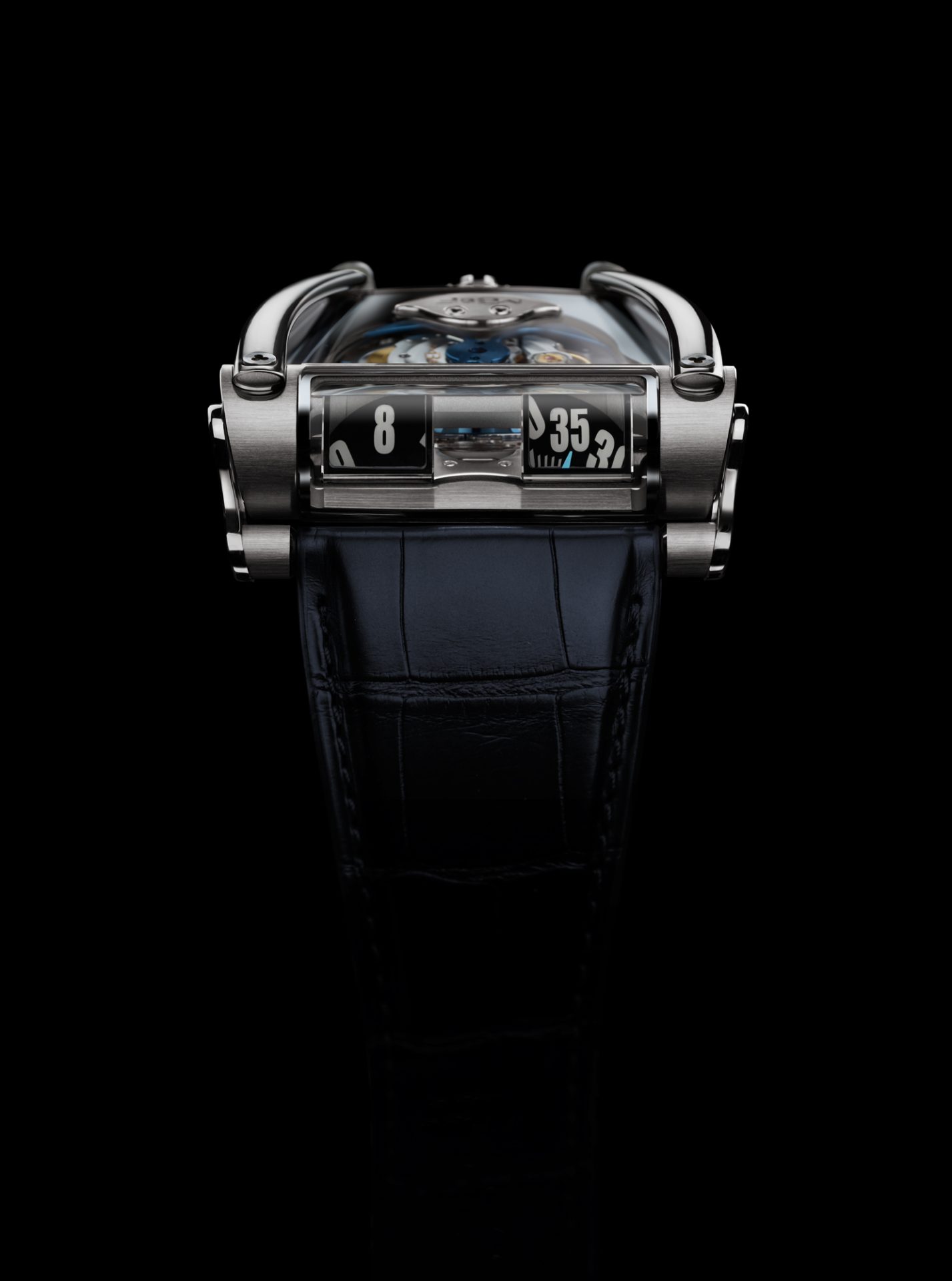
In 2011, MB&F launched its round-cased Legacy Machine collection. These more classical pieces – classical for MB&F, that is – pay tribute to nineteenth-century watchmaking excellence by reinterpreting complications from the great horological innovators of yesteryear to create contemporary objets d’art. LM1 and LM2 were followed by LM101, the first MB&F Machine to feature a movement developed entirely in-house. The year 2015 saw the launch of Legacy Machine Perpetual featuring a fully integrated perpetual calendar. MB&F generally alternates between launching contemporary, resolutely unconventional Horological Machines and historically inspired Legacy Machines.
As well as Horological and Legacy Machines, MB&F has created space-age Music Machines (1, 2 and 3) in collaboration with Reuge; unusual clocks in the form of a space station (Starfleet Machine) and a spider (Arachnophobia); as well as three robot clocks: Melchior, Sherman and Balthazar.
And there have been distinguished accolades reminding us of the innovative nature of MB&F’s journey so far. To name a few, at the Grand Prix d’Horlogerie de Genève in 2012, MB&F was awarded the Public Prize (voted for by horology fans) and the Best Men’s Watch Prize (voted for by the professional jury) for Legacy Machine No.1. At the 2010 Grand Prix d’Horlogerie de Genève, MB&F won Best Concept and Design Watch for the HM4 Thunderbolt. In 2015 MB&F received a Red Dot: Best of the Best award – the top prize at the international Red Dot Awards – for the HM6 Space Pirate.

